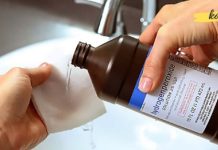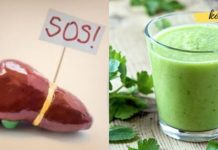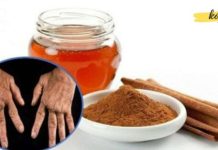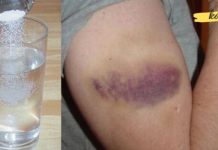How to Overcome the Problem of Varicose Veins? These Natural Remedies Can Help

Varicose veins are a common condition that affects millions of people worldwide. Characterized by enlarged, twisted, and swollen veins, usually visible under the skin, varicose veins most commonly occur in the lower limbs—especially in the calves and thighs.
Although they may seem like a cosmetic issue at first, varicose veins can lead to serious discomfort, including pain, heaviness, cramping, swelling, and in more severe cases, skin ulcers or blood clots. The condition develops when veins lose their elasticity and the valves that help circulate blood toward the heart become weak or damaged, causing blood to pool in the veins.
But don’t worry — natural approaches, lifestyle changes, and home remedies can make a big difference. Let’s explore how you can fight varicose veins effectively and naturally.
🔍 What Causes Varicose Veins?
Several factors contribute to the development of varicose veins. The most common include:
Age: As you grow older, your veins lose elasticity, and their valves weaken, making varicose veins more likely.
Gender: Women are more prone to varicose veins than men. Hormonal changes during pregnancy, menstruation, or menopause, as well as the use of hormonal contraceptives, increase the risk.
Genetics: If you have a family history of varicose veins, your chances of developing them increase significantly.
Obesity: Excess body weight places additional pressure on veins, contributing to valve dysfunction and poor circulation.
Prolonged Standing or Sitting: Occupations or lifestyles that involve standing or sitting for long periods hinder blood flow, raising venous pressure and encouraging the development of varicose veins.
🏃♀️ Self-Care: First Line of Defense
Before reaching for medications or considering surgery, focus on lifestyle adjustments that can slow the progression of varicose veins and reduce their symptoms:
Exercise regularly (e.g., walking, swimming, cycling) to stimulate blood flow.
Wear compression stockings to support your veins and reduce swelling.
Elevate your legs when resting to facilitate venous return.
Avoid tight clothing that restricts circulation.
Take breaks to move around if your job requires long periods of sitting or standing.
🌿 Natural Remedies That Can Help
Although no remedy can “cure” varicose veins entirely without medical intervention, many natural treatments can relieve discomfort, reduce swelling, and improve circulation. Here are some of the most effective ones:
1️⃣ Therapeutic Massage with Essential Oils
While massage cannot eliminate varicose veins, it can significantly boost blood flow, reduce swelling, and relieve pain.
✔ Recommended Oils:
Chamomile
Geranium
Sage
Lavender
These essential oils have anti-inflammatory and circulatory-boosting properties. Mix a few drops of essential oil with a carrier oil like coconut or almond oil, and gently massage the affected area. Be careful not to apply direct pressure to bulging veins. Always massage upwards, in the direction of the heart.
⚠ Note:
The active ingredient in many anti-varicose creams and gels is heparin, which thins the blood and helps prevent clots. However, essential oils can offer a gentler alternative without side effects.
2️⃣ Apple Cider Vinegar (ACV) Foot Rubs
ACV is widely praised for its ability to stimulate blood circulation and tighten skin tissues.
How to use:
Soak a cloth in raw, unfiltered apple cider vinegar.
Apply it to the affected area and leave it on for 20–30 minutes.
Alternatively, rub ACV gently into your legs twice daily.
Over time, ACV may help reduce the visibility and pain of varicose veins.
3️⃣ Horse Chestnut Tincture
Horse chestnut (Aesculus hippocastanum) is one of the most studied herbs for treating varicose veins. It contains a powerful compound called aescin, which strengthens vein walls, reduces inflammation, and prevents fluid leakage.
🌼 DIY Tincture Recipe:
Take 1 tablespoon of horse chestnut flowers and seeds.
Crush them well and place in a glass container.
Add 100 ml of vodka or 70% alcohol.
Store in a cool, dark place for 7 days, shaking occasionally.
Strain and store in a dark bottle.
✅ Dosage: Take 30 drops three times a day before meals, with a glass of water.
Caution: Horse chestnut is not recommended for pregnant women, nursing mothers, or people with liver or kidney issues without consulting a doctor.
4️⃣ Hazel Leaf Tea (Hazelnut Leaves)
Hazelnut leaves help strengthen capillaries, improve venous tone, and reduce inflammation.
🍵 Preparation:
Add 1 tablespoon of dried hazel leaves to 1 cup of boiling water.
Steep for 15–20 minutes like a tea.
Drink 1/4 cup, four times a day.
This tea is especially helpful in the early stages of varicose veins. Regular use, combined with other methods, can slow progression and ease symptoms.
🥗 Diet for Vein Health
Your diet plays a major role in both preventing and managing varicose veins.
✅ Eat More:
Fresh fruits and vegetables (rich in vitamin C, bioflavonoids, and fiber)
Garlic and onions (natural blood thinners)
Berries (anti-inflammatory and vein-protective)
Whole grains
Leafy greens
❌ Avoid:
Processed and salty foods (which can cause water retention)
Excessive sugar and refined carbs
Trans fats
Hydration is also key — aim for at least 8 glasses of water daily to keep your blood flowing freely.
📝 Final Thoughts
Varicose veins don’t appear overnight, and they can’t be healed overnight either. But with patience, consistency, and natural approaches, you can significantly reduce their appearance, manage discomfort, and prevent complications.
Natural treatments like massaging with essential oils, herbal tinctures, healing teas, and dietary changes can be surprisingly effective — especially when used early or alongside medical advice.












